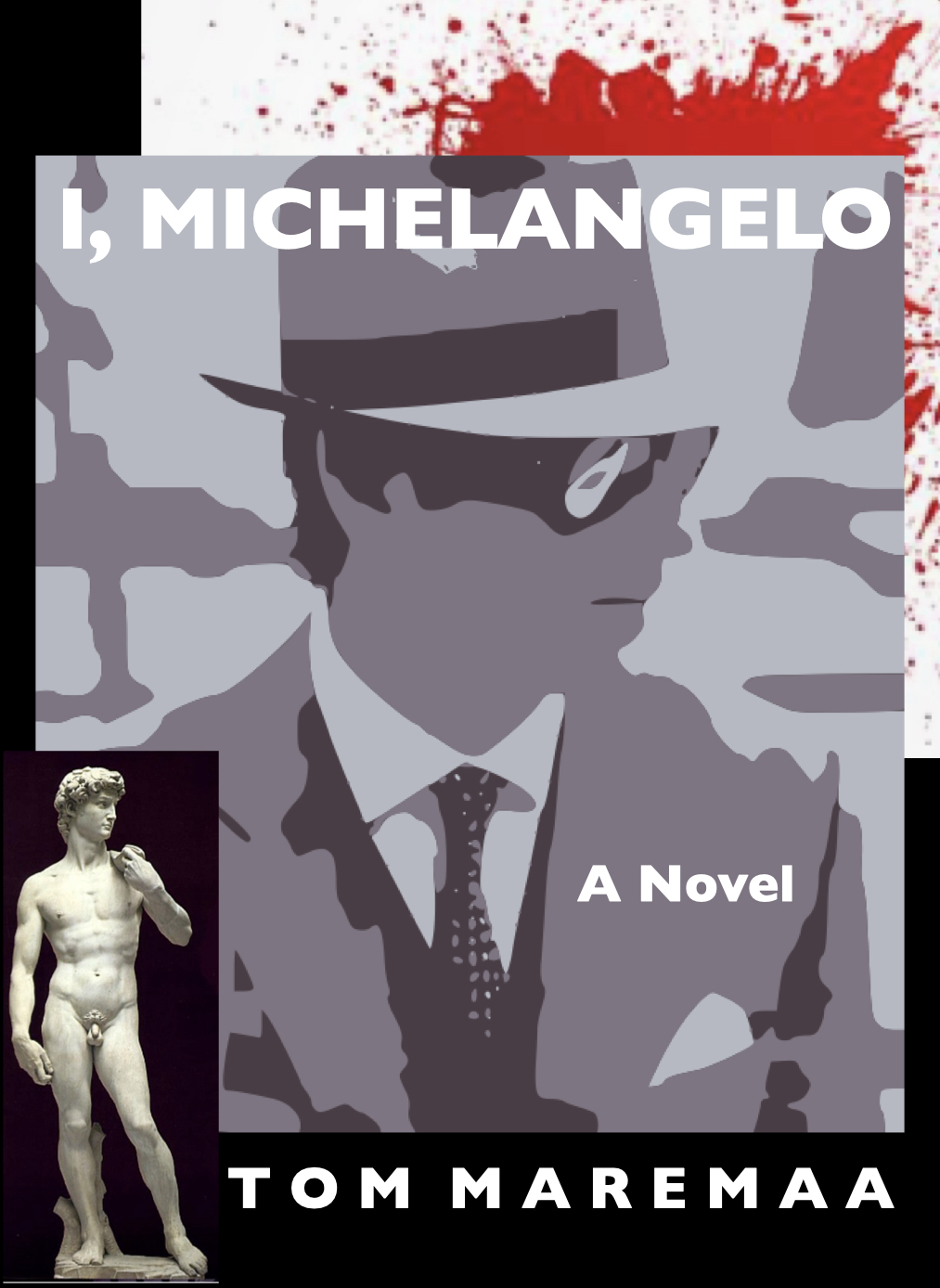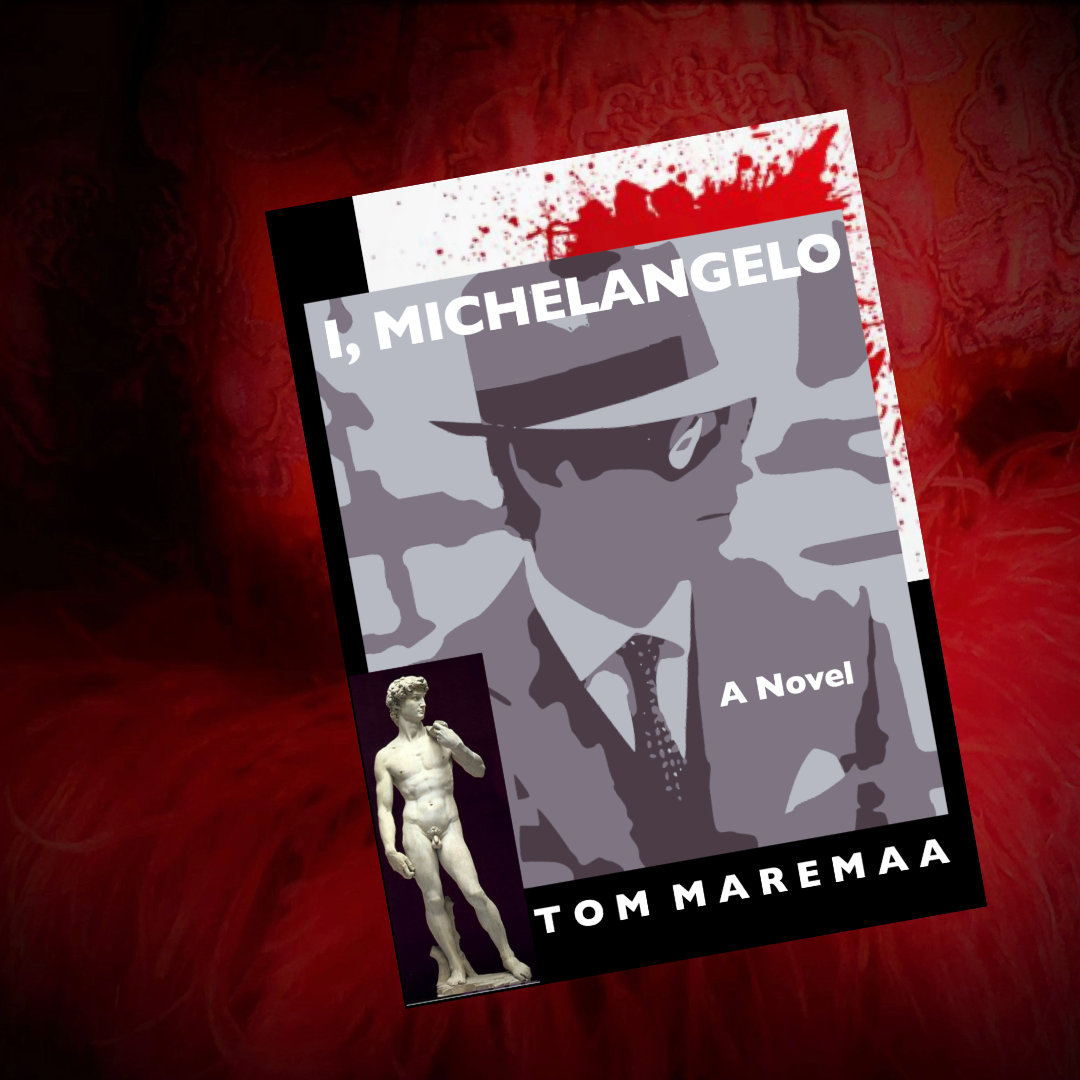Heather’s Bookshelf: Author Interview with Tom Maremaa
Book Title: I, Michelangelo
Released: 08/09/24
Genre: Historical/Crime Fiction
Interview by Heather L. Barksdale
What inspired you to write “I, Michelangelo”?
Maremaa: As it happened, I was working on another novel when I, Michelangelo, came on to me unexpectedly with a surge of remembered emotion and passion. I knew then I had to give it voice, listen to the characters and allow the novel to write itself without a huge amount of interference on my part, at least not consciously.
Passion always dictates form and in this case the form was not generic fiction but something entirely original in voice and storytelling. The account of a man who teaches middle school, then loses his job and his pregnant wife in a hit-and-run accident, and breaks bad with a criminal enterprise to support his young son and rebuild his life and family was strong enough to have a life of its own. It felt like a story that had to be written, although I never envisioned telling it from so many different points of view. It was a technique I had never employed before in my previous works of fiction, and felt strange at first, yet appropriate to the narrative. These things happen, I realized: you start on one book and another surfaces and makes itself known and demands to be written.
Oddly enough, on walks and while lying in bed at night I kept reciting the lines from Eliot’s Prufrock, which have always haunted my imagination:
In the room the women come and go
Talking of Michelangelo
Why? And who was this Michelangelo?
And then right there, the character of Michelangelo D’Antoni emerged, almost full blown. He began to walk around our house from room to room, smiling and laughing a bit, and even accompanying my wife and I on our walks outside to catch a breath of fresh air. He seemed friendly and engaging, a decent fellow, with a lot on his mind. He also seemed to have a dark side. Once characters step inside your house, they almost become family and you begin to treat them as such. Memory knows and knowing remembers: I had grown up with a lot of Italian kids in my old neighborhood and particularly in school and knew them well, loved playing kids’ games with them, hanging out, talking about girls and sports, and getting a pretty good feel for how they thought and acted and what they seemed to want from life.
The mystery to be solved was what they had all become, in time, as they grew older and took on life’s myriad burdens and sorrows. What happens to a man like Michelangelo D’Antoni? He makes certain choices with his life and suddenly finds himself in the thick of a plot to take him out by a force he barely comprehends. All the while he is trying to bond with his young son Gio who has turned sixteen and is feeling his oats, running a bit wild, challenging the father’s dominance and control. As I read the biographies of Michelangelo the painter and sculptor, I noted the same conflicts and struggles with fathers, both his own and the Holy Fathers who sat in their papal thrones in the sixteenth century in Florence and Rome.
And then there was this thing about Florence. I felt compelled to add to the story the events of the young sculptor’s life, particularly the creation of the statue of David and the painting of the Sistine Chapel.
How did you come up with the names of your main characters?
Maremaa: Once your character begin to speak and you can hear snippets of their conversations, you’ll know what their names are. Every voice you hear in conversation has a name attached to it. You just have to listen for it.
Is there anything that you want readers to know about you, your writing process or your book?
Maremaa: What I learned and put into practice with this novel was to write spontaneously, without an outline, without notes, only a rough idea in my head as to what I wanted say in a particular scene or section of the narrative.
The lesson was simple enough: write to discover what you don’t know, what comes to you from some other place than your day-to-day conscious activities. I write when I can hear and feel what my characters are hearing and feeling. I go for a streak, as Ken Kesey once told me you should do. You write and write and see what happens. Sometimes it’s good, sometimes not. You can always edit the content later, recast the narrative or pull it in a different direction.
I shoot for one hour per day without interruption. I ask my wife not to interrupt me during that hour, not a word, not a phone or text message that might distract me. Head down, letting the words flow, not judging if they’re good or bad (that comes later with editing). Speaking of editing, I let that happen after I’ve got a first draft that I think I can live with. Then I ask my critic to step up and make his or her voice heard. It’s a lot like playing tennis spontaneously on the court, hitting your shots without thinking, allowing your body and mind to reflex and react to the shots as it wants without pre-judging.
You can check out my website: www.tommaremaa.com for more about my writing and my previous 17 novels and novels. I also have a lot of blog postings that might be informative.
Interestingly, I asked the Perplexity.Al website about themes in my writing, and it spat out this response:
Based on the search results, some key themes that Tom Maremaa explores in his novels include:
1. Magical realism and blending of genres - Several of his works are described as incorporating elements of magical realism, science fiction, and fantasy alongside more realistic narratives.
2. Historical and political themes - His novel "Man on the Isle of Jura" imagines an encounter with George Orwell as he's writing 1984, exploring themes of totalitarianism and political power.
3. Time travel and alternate history - "Man on the Isle of Jura" involves a character traveling back in time to 1948 to interact with Orwell.
4. Existentialism and living "on the edge" - His novel "The Existentialist" is described as following characters who live dangerously and existentially.
5. Strong female protagonists - "The Existentialist" centers on three young women characters living boldly across several decades.
6. Quests for justice - His characters often seem to be on missions or quests related to righting wrongs or pursuing justice.
7. Blending of fact and fiction - He incorporates real historical figures and events into fictional narratives.
8. Exploration of cultural and linguistic diversity - Maremaa mentions traveling widely to learn about different cultures and languages, which likely influences his writing.
Overall, Tom Maremaa seems to craft complex, genre-blending narratives that explore weighty philosophical and political themes through the lens of both realistic and fantastical plot elements. His work appears to grapple with big ideas about power, justice, and human nature.
Well, that’s how an AI defines my work. Be sure to explore this on your own and see what you get. Smile and then forget it.
If "I, Michelangelo" were adapted into a movie, who would you like to see cast to play your lead characters?
Maremaa: Robert De NIro or Al Pacino.
When you encounter writer’s block, what do you do to break yourself out of it?
Maremaa: Writer’s blocks are painful, indeed, and I’ve gone through a few of them in my time, and still do. Mostly, I return to my mantra to get out of them, namely, your writing will run as true and deep as you’re feeling when it’s running truest and deepest. Grief, loss, sadness, loneliness, sorrow, separation, being down and out — among many currents of feeling — are what you have to come to terms with to break through those blocks.
Are there any tips that you would like to share with other aspiring authors?
Maremaa: Trust your instincts, always. Keep your critic at bay until you really need that critic to help with edits and revisions. Be careful you don’t fall into a trap with a publisher who jumps up and says they like your work but want lots of changes/revisions, without truly making a commitment to publish it. Remember, great work brings a great feeling of liberation for the reader, a feeling you’ve opened doors to the unknown that nobody else has touched or tried to open before. That’s what I strive for in my writing.
What is your favorite book, genre, and/or author?
Maremaa: I read exhaustively across many genres, including literary fiction, speculative, mystery, historical, biographical, memoir, you name it. I’m not bound to one genre or another and my writing tends to mix genres whenever I can. Each morning I wake up and read some part of Joyce’s Ulysses, just to see what a master does and how far I have to go to get anywhere close to that level of brilliance. As for favorite authors, I like Borges, Pamuk, Marquis, Bolano, Doris Lessing, and a lot of American and British authors, both alive and gone.
What are you working on next?
Maremaa: I’m working on a new novel entitled AFTER THE FALL, which is about half written right now. It follows events from London, 1944 to New York, 2001 and beyond to the present. The book is in three parts, all interconnected, as we follow the lives of the main characters through time and space, in different settings. I was stuck for a while on how the parts would fit together, but then things fell into place and I got cooking.
Interested in checking out the book for yourself?
Find it for purchase here
Interested in submitting your book for review? Visit my review page for guidelines and submission requirements.
review


